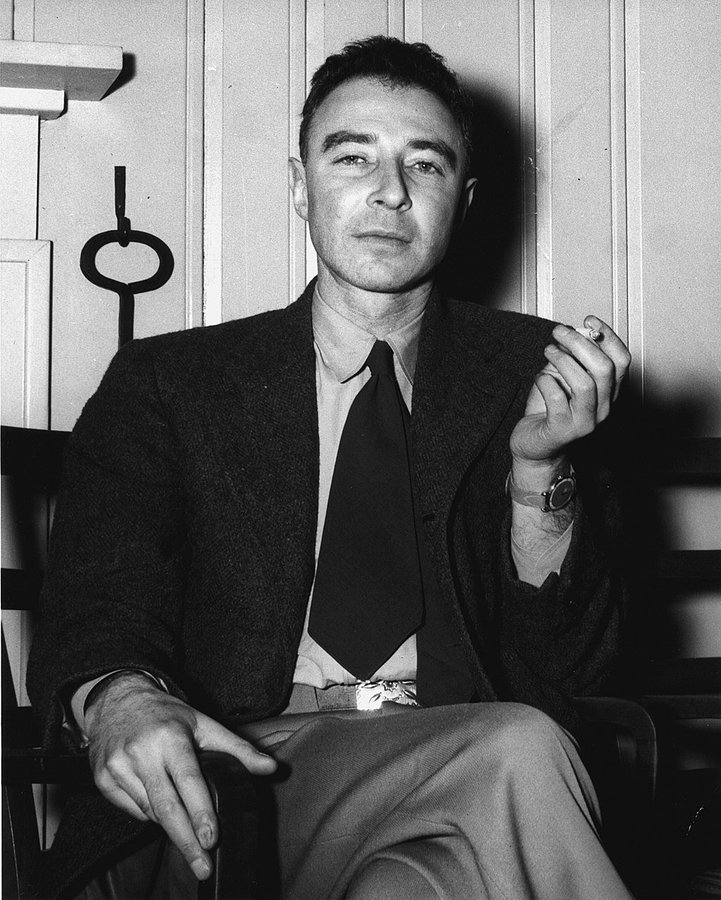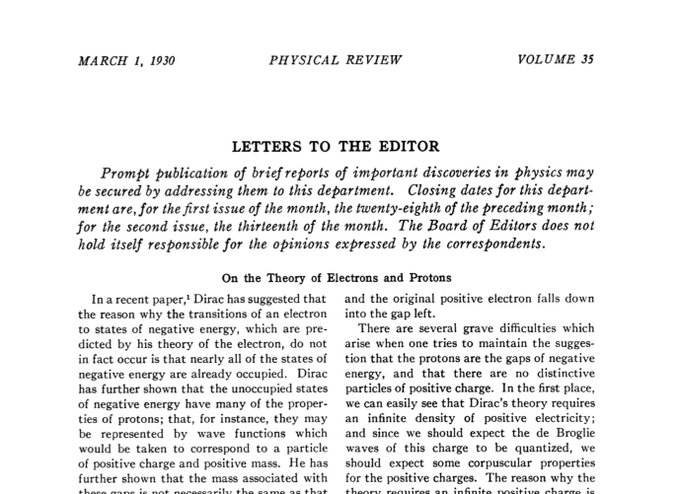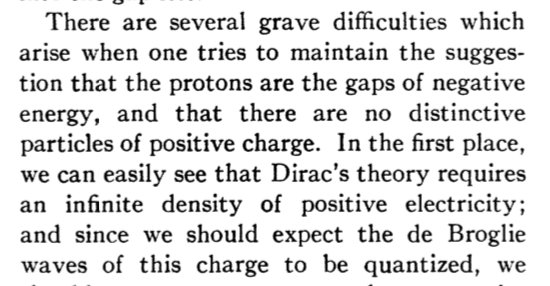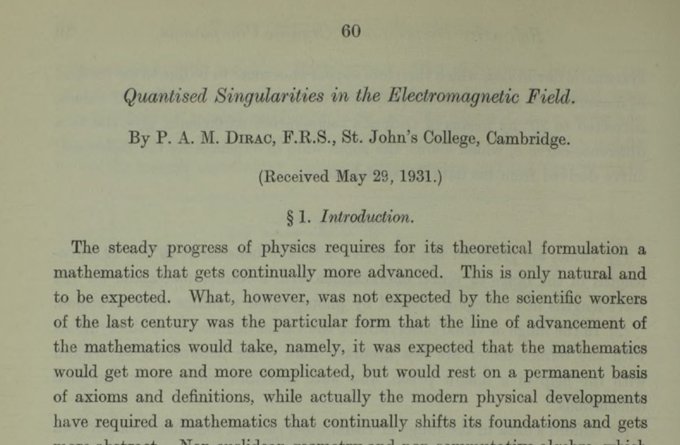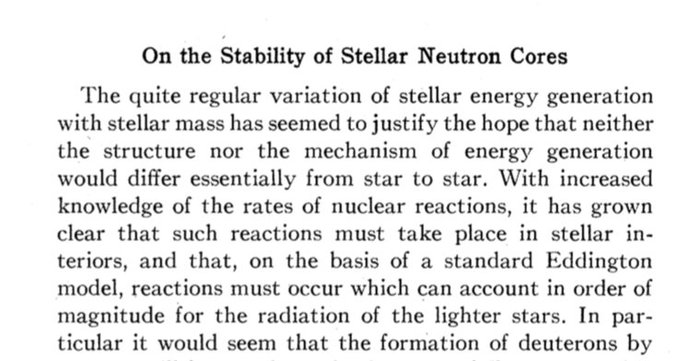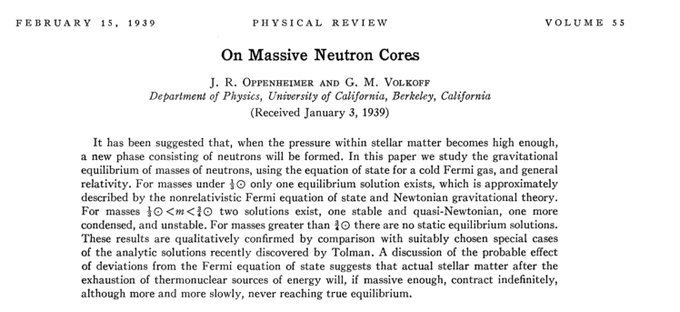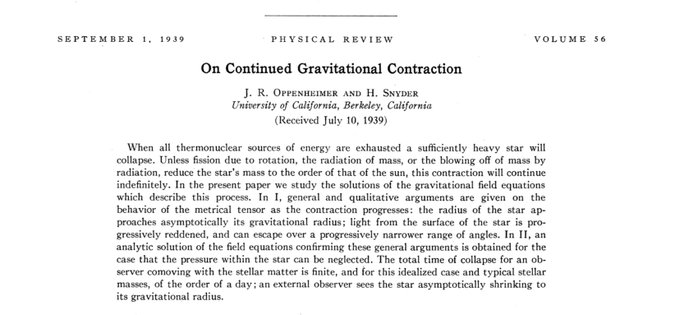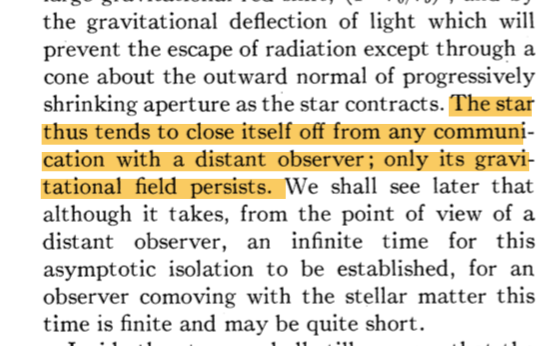Julius Robert Oppenheimer, the physicist best known for directing scientific work at Los Alamos during the Manhattan Project, was born #OTD in 1904. His important contributions to quantum mechanics, astrophysics, and relativity are not as well known!
Image: Ed Westcott
Image: Ed Westcott
While a student at Cambridge, Oppenheimer reportedly tried to poison his tutor (1948 Nobel Laureate Patrick Blackett) with an apple laced with toxic chemicals. (I din& #39;t know this story until @IBJIYONGI told me a few years ago.)
https://www.atomicheritage.org/profile/patrick-blackett">https://www.atomicheritage.org/profile/p...
https://www.atomicheritage.org/profile/patrick-blackett">https://www.atomicheritage.org/profile/p...
But that& #39;s not what I want to talk about.
Oppenheimer wasn& #39;t as prolific as many of his contemporaries, but he had ~exquisite~ taste in the problems he worked on. Foundational ideas about subjects like anti-particles or black hole formation can be traced back to Oppenheimer.
Oppenheimer wasn& #39;t as prolific as many of his contemporaries, but he had ~exquisite~ taste in the problems he worked on. Foundational ideas about subjects like anti-particles or black hole formation can be traced back to Oppenheimer.
In one of Dirac& #39;s first papers after the discovery of his eponymous equation, he explored the idea of the proton being the positively charged anti-particle of the electron. But a 1930 paper by Oppenheimer pointed out problems with this interpretation.
https://journals.aps.org/pr/abstract/10.1103/PhysRev.35.562">https://journals.aps.org/pr/abstra...
https://journals.aps.org/pr/abstract/10.1103/PhysRev.35.562">https://journals.aps.org/pr/abstra...
Oppenheimer’s insight prompted Dirac to propose a new particle that he called the “anti-electron.” Carl Anderson observed this particle the following year and named it the “positron.”
https://royalsocietypublishing.org/doi/abs/10.1098/rspa.1931.0130">https://royalsocietypublishing.org/doi/abs/1...
https://royalsocietypublishing.org/doi/abs/10.1098/rspa.1931.0130">https://royalsocietypublishing.org/doi/abs/1...
(Actually, Anderson first referred to it as the "positive electron," which, I don& #39;t know if that& #39;s any better than "anti-electron." An editor from Physical Review stepped in and suggested he consider "positron.")
Oppenheimer arrived in Berkeley in 1929 to take a position as an assistant professor, in a special arrangement that also saw him teaching at Caltech. His first doctoral student at Berkeley was Melba Newell Phillips. https://twitter.com/mcnees/status/1223636948335628289">https://twitter.com/mcnees/st...
By the late 1930s, after he was established as a full professor, Oppenheimer turned his attention towards astrophysical problems. With his students and collaborators he made major contributions to the nascent theory of neutron stars and black holes.
In a 1938 paper with post-doc Robert Serber, Oppenheimer considered the stability of stellar core composed entirely of neutrons.
https://journals.aps.org/pr/abstract/10.1103/PhysRev.54.540">https://journals.aps.org/pr/abstra...
https://journals.aps.org/pr/abstract/10.1103/PhysRev.54.540">https://journals.aps.org/pr/abstra...
This was followed in 1939 by a paper with Volkoff, published alongside work by Tolman. They modeled neutron stars by applying Tolman& #39;s self-gravitating perfect fluids solutions of general relativity to a degenerate gas of neutrons.
https://journals.aps.org/pr/abstract/10.1103/PhysRev.55.374">https://journals.aps.org/pr/abstra...
https://journals.aps.org/pr/abstract/10.1103/PhysRev.55.374">https://journals.aps.org/pr/abstra...
A thread on Tolman and his work: https://twitter.com/mcnees/status/1235247917658771459">https://twitter.com/mcnees/st...
The Oppenheimer and Volkoff paper was the first serious treatment of the structure of neutron stars, which had been proposed by Baade and Zwicky only five or six years earlier. It set the stage for realistic relativistic models of stellar structure.
About six months later, Oppenheimer and his student Hartland Snyder published the first calculation of black hole formation. This paper is a real gem.
https://journals.aps.org/pr/abstract/10.1103/PhysRev.56.455">https://journals.aps.org/pr/abstra...
https://journals.aps.org/pr/abstract/10.1103/PhysRev.56.455">https://journals.aps.org/pr/abstra...
Oppenheimer and Snyder considered a homogeneous sphere of pressureless matter, and showed that as it collapses it "tends to close itself off from any communication with a distant observer; only its gravitational field persists."
A lot of ideas that made their way into the popular understanding of black holes appeared in this paper: intense red shifting of light, the fact that witnessing the collapse requires infinite patience for a distant observer but proceeds rather quickly for someone plunging inward.
So by the time WWII got underway, Oppenheimer had already made important contributions across theoretical physics. Perhaps he would have continued to work on gravitational collapse and black holes, or maybe he would have flitted off to another subject.
The Manhattan Project came next, and that& #39;s the part that everyone has heard about. I won& #39;t bore you.
After the war Oppenheimer left California to become director of the Institute for Advanced Study. In 1949 he was brought before the House Un-American Activities Committee for his Communist associations, and they blocked his access to classified material. https://www.atomicheritage.org/history/huac-and-manhattan-project">https://www.atomicheritage.org/history/h...
Anyway, none of that is what I came here to tell you about, either.
In 1929, well before most of the stuff I wrote about above, Oppenheimer contracted tuberculosis. It wasn& #39;t too bad; he convalesced at a ranch in New Mexico with his brother Frank (also a physicist, also attacked by the HUAC). He fell in love with the place.
As the story goes, when Oppenheimer found out the ranch could be leased he shouted "Hot dog!" He eventually bought the property and named it "Perro Caliente."
That& #39;s it. That& #39;s the thread. He named his ranch "Hot Dog."
That& #39;s it. That& #39;s the thread. He named his ranch "Hot Dog."
At the risk of creating a Closed Threadlike Curve (CTC) I will quote tweet this tweet which quote tweets my first tweet. https://twitter.com/PhysicsToday/status/1252960843899297792">https://twitter.com/PhysicsTo...

 Read on Twitter
Read on Twitter